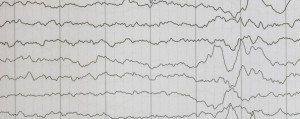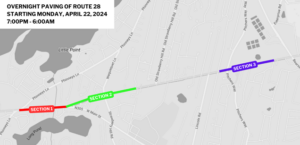 HYANNIS – Newer, comprehensive testing will soon be available to provide more in-depth information about seizure activity and capture episodes that may not be detected during routine EEG. The new testing gives hope to patients suffering from epilepsy and other seizure disorders.
HYANNIS – Newer, comprehensive testing will soon be available to provide more in-depth information about seizure activity and capture episodes that may not be detected during routine EEG. The new testing gives hope to patients suffering from epilepsy and other seizure disorders.
EEG (electroencephalogram) is an outpatient test that takes about 30 minutes and is used to capture brainwave activity. Ambulatory EEG with video, is a test that can capture 24-72 hours of EEG recording at home with video.
“Ambulatory EEG is more specialized than an EEG in that we get significant amount of brainwave data which can be missed during routine EEG testing,” said Mathew Pulicken, MD , a neurologist at Cape Cod Hospital.“ The longer term testing is also used to help collect data during suspicious episodes at home with video, and can be correlated with brain wave activity.”
The device is like a holter monitor, which monitors the electrical impulses of the heart, except, in this case it will be recording brainwaves.
“The electrodes are placed on the patient’s scalp and covered with a cap,” said Dr. Pulicken. They will be given a video camera that they can set up to record when they are home and during sleep, to capture any episodes that may be cause for concern for seizure activity.
This is an important test because patients can’t always describe what happens to them when they have a seizure, said Dr. Pulicken. “It can also help determine if episodes involving changes in awareness that are happening at home, may be cause for concern regarding seizure activity. An EEG can be normal in between seizure activity and, due to time constraints, we were not able to record longer in the hospital. With ambulatory EEG, patients can continue their routine activities at home, while brain waves are being recorded.”
For most people with epilepsy, the basic EEG still gives valuable information for diagnosis, said Dr. Pulicken. The ambulatory EEG with video is used on patients who continue to have episodes on medications or those having unexplained episodes or spells that may indicate seizure activity, he added.
The Ambulatory EEG with video will available at Dr. Pulicken’s office at Neurologists of Cape Cod in Hyannis in early 2016.
Seizures result from abnormal activation of brain cells. Thousands of nerve cells in your brain transmit information from cell to cell by means of electrical impulses, which keeps your body functioning properly. When abnormal activation of some of the brain cells occurs, it disrupts this balance, and can cause neurons to transmit signals in an unruly fashion, leading to electrical overload and causing a seizure.
To solve the mystery of location of the nerve cells generating seizures, neurologists take a step by step approach:
- A description of the seizure activity and a detailed discussion of medical history
- The simplest test is an EEG (electroencephalogram) that measures brainwaves and can indicate the type of seizure and location of the seizure.
- Imaging studies like MRI can be helpful in determining the abnormal areas responsible for neuronal activation
- Once diagnosed, a trial of an anti-epilepsy medication is pursued after discussion with your neurologist
- Follow-up with your neurologist to assess how the medication is working.
For 70% of the patients with epilepsy, being on one anti-epilepsy medication will work to control the seizures, said Dr. Pulicken. The remaining 30% may need a combination of two to three medications, and some of these patients may not respond to combination medications, and will have uncontrolled or “refractory” epilepsy.
There are other options for medication refractory epilepsy. Epilepsy surgery can be used to remove areas of the brain which are causing recurrent seizures resistant to medications. However some areas of the brain serve crucial function and some patients may not be good surgical candidates. Vagal nerve stimulation (VNS) and responsive neurostimulation (RNS) are advances made in the past few years that offer new hope to patients with uncontrollable seizures.
Vagal nerve stimulation is a silver dollar-sized device implanted in the patient’s chest just under the skin and stimulates the vagal nerve through a wire attached to the nerve. It can be used to control seizures that are medication refractory, start in one area of the brain or are more diffuse.
Responsive neurostimulation is newer device that is implanted under the scalp with one or two wires going into the brain to monitor and stimulate the area where the seizure originates. This can be used on patients who have focal seizures, who are medication refractory and not ideal surgical candidates said Dr. Pulicken.

























Speak Your Mind